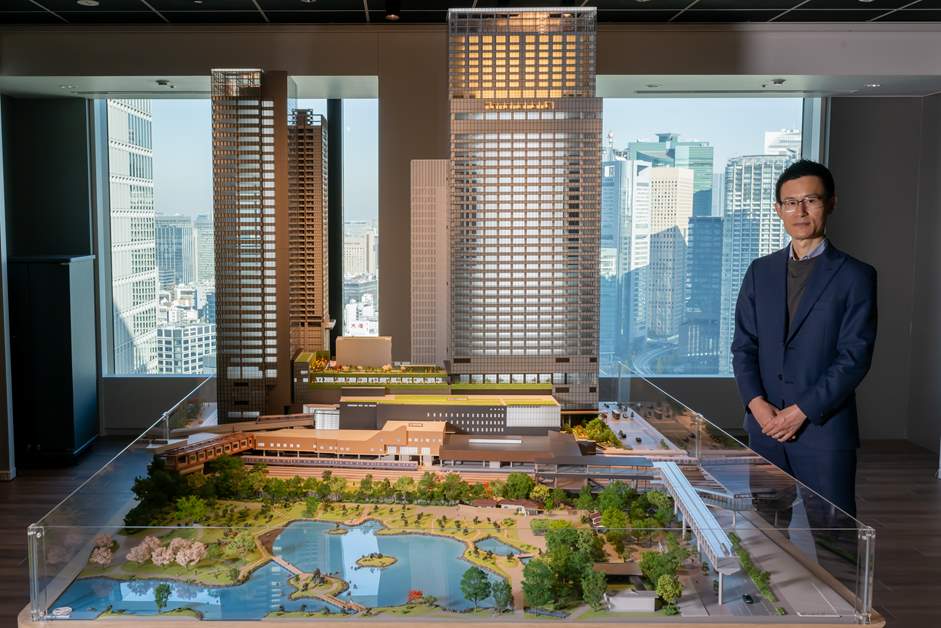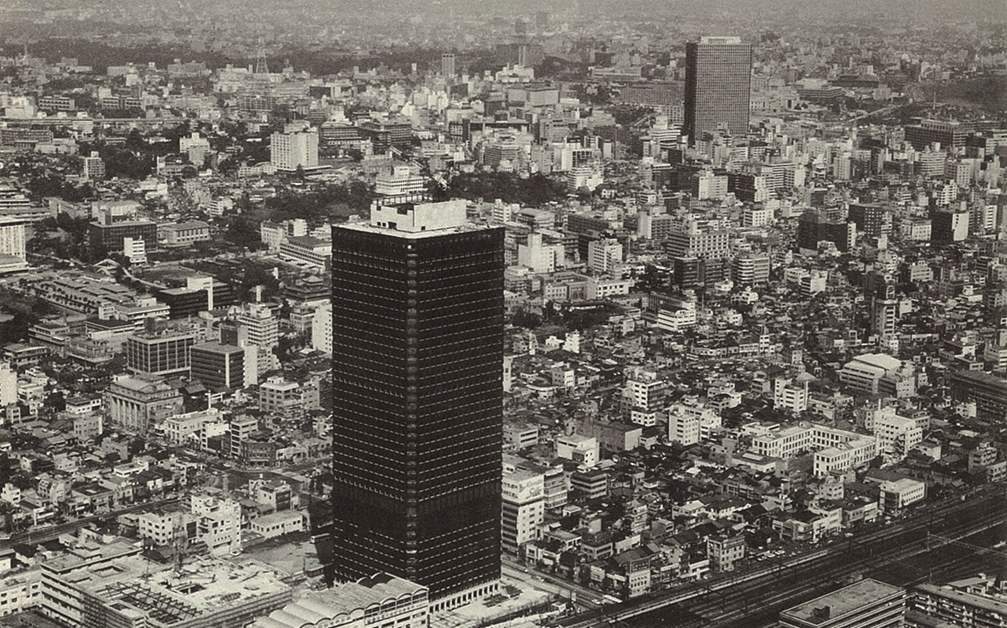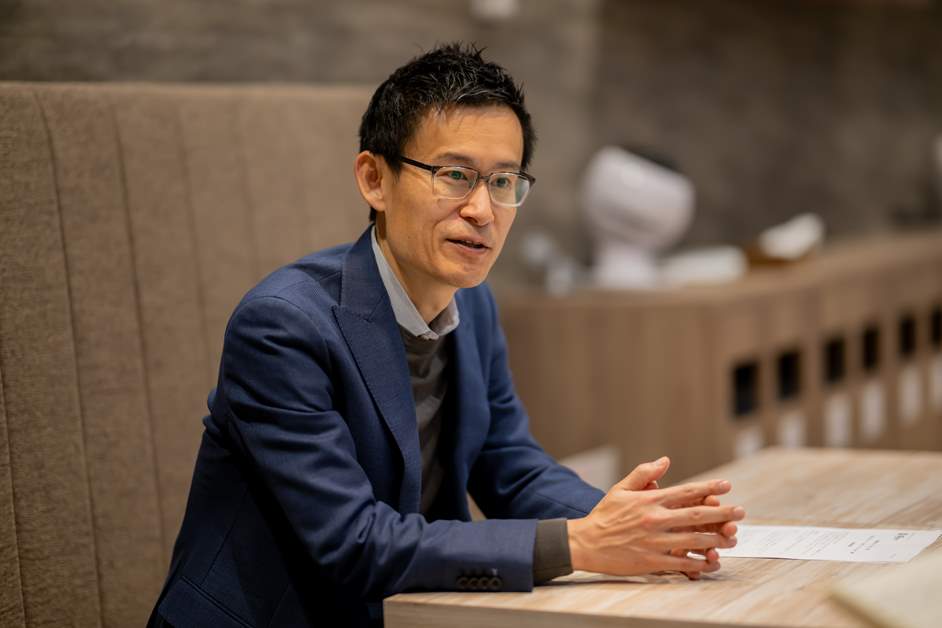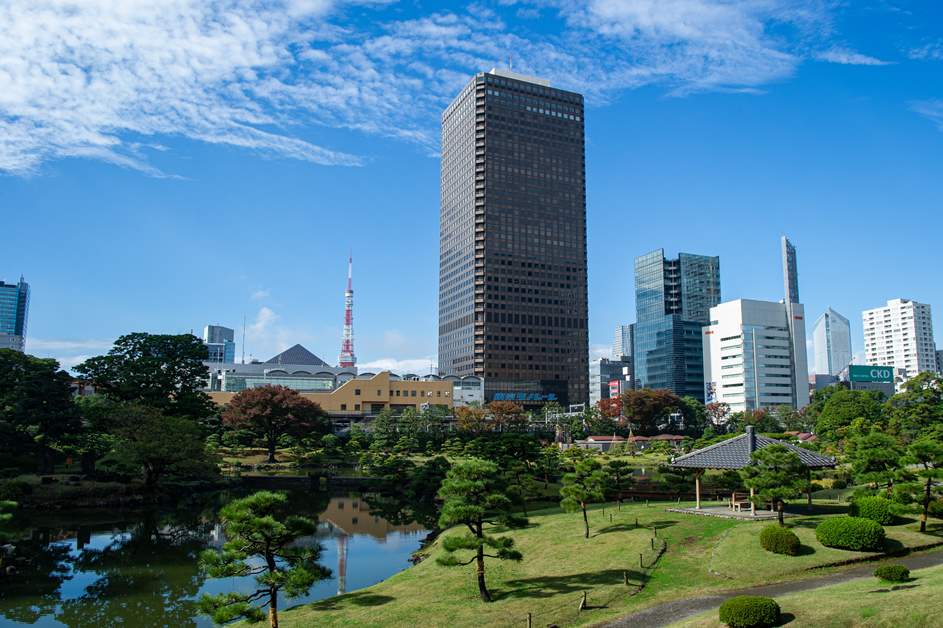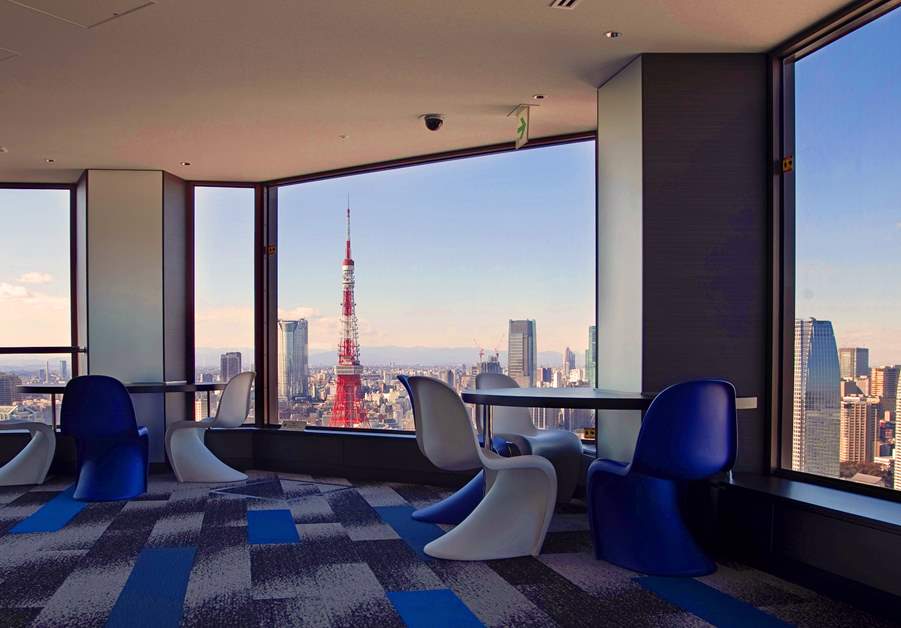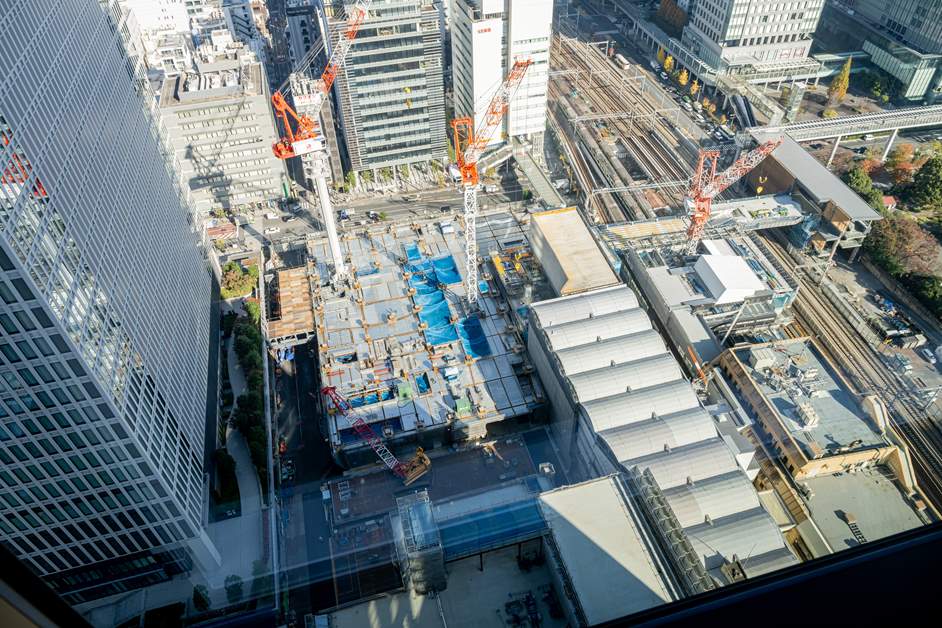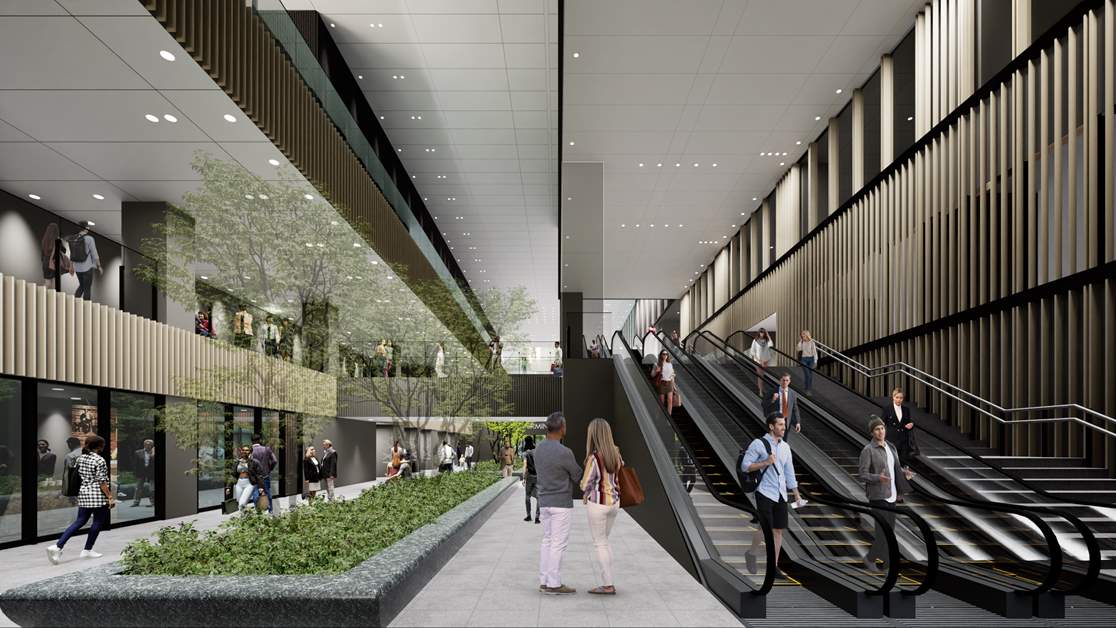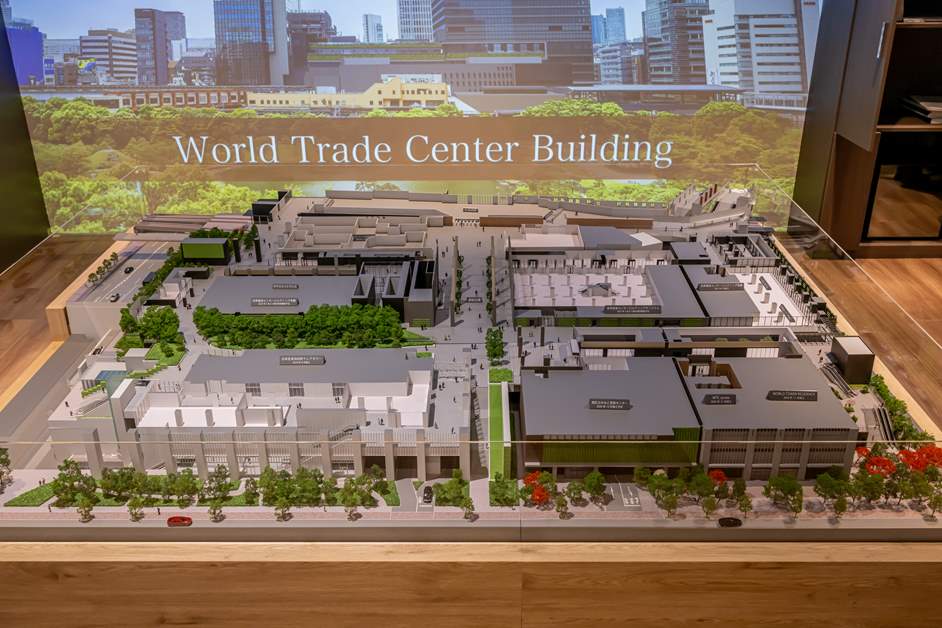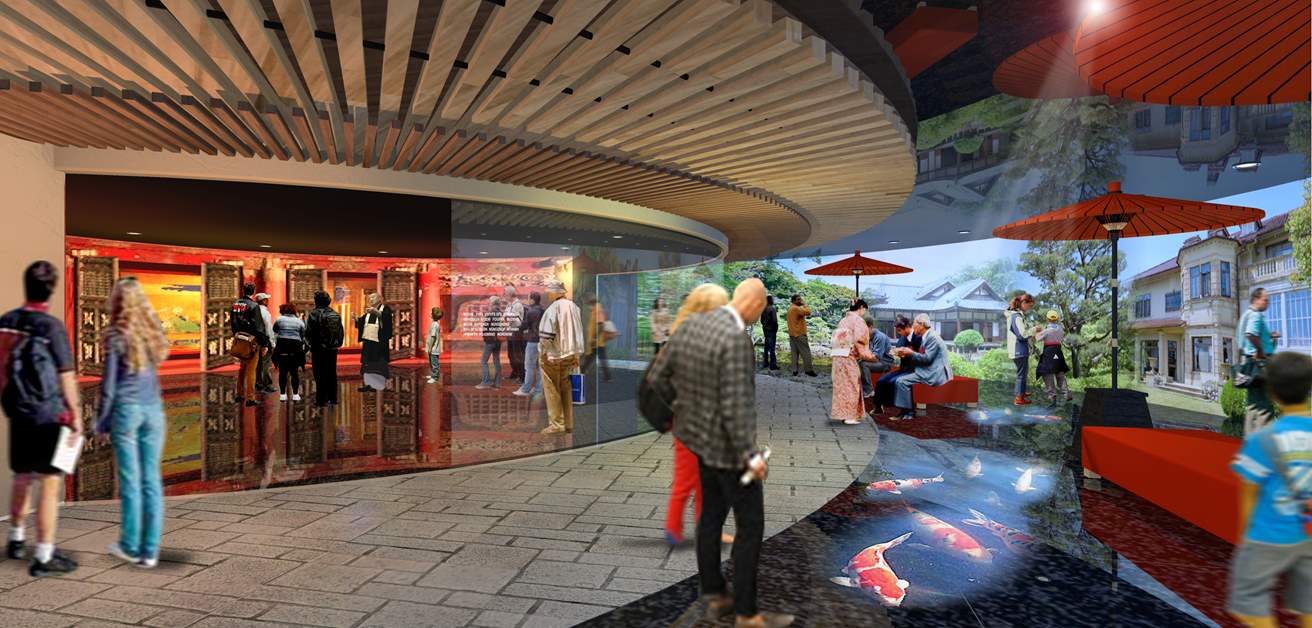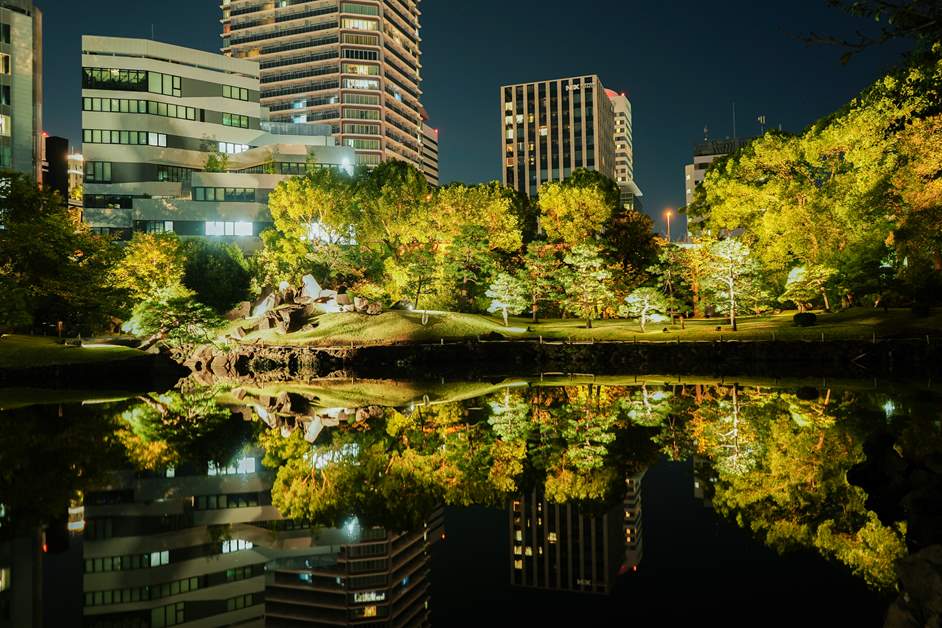Hamamatsucho's future is shining bright! A close look at the World Trade Center Building reconstruction project
Japan's third skyscraper all in bronze
Construction began in 1967, and one of the initiating factors was the Tokyo Olympics held three years earlier. At the time, the Olympic Games led to the understanding that further economical development in Japan was needed, and I heard that the plan to build a skyscraper to represent Japan was meant to be a symbol for Tokyo leading this rapid economic growth.
At the time of its completion, there were no tall buildings in the neighborhood (photo courtesy of WORLD TRADE CENTER BUILDING, INC.)
In 1964, the Tokyo Monorail Line connecting Haneda Airport and Hamamatsucho Station was opened. The station building of the transportation hub JR Hamamatsucho Station (then still the Japan National Railways) was also located here, and there was a large area of land next to it, which became the major deciding factor. The building was envisioned to be a multi-purpose center for trade as well as transportation, and was built with the cooperation of the Tokyo Chamber of Commerce and Industry, the business community, government agencies, and financial institutions.
Kazuki Arakawa, also a first-class architect.
Yes, it did. The overall planning of the original building was supervised by an architect named Morin Kaku, and it had a distinctive bronze-colored exterior, which was very rare in Japan.
Following Kasumigaseki Building, the World Trade Center Building was the third skyscraper built in Japan, and it was the tallest building in Japan until the Keio Plaza Hotel was built in Nishi-Shinjuku. It is sure to be remembered by many as a landmark in front of Hamamatsucho Station.
The original World Trade Center Building as seen when looking up from the Kyū Shiba Rikyū Garden
Indeed. The original World Trade Center Building was a 40-story office building, and from an observation deck on the top floor - still a rarity at the time - you could see all of Tokyo. The admission fee was not that expensive, and the emphasis on providing value through experiences rather than generating revenue was a sign of great foresight in my opinion.
The observation deck offered a bird's-eye view over all of Tokyo (photo courtesy of WORLD TRADE CENTER BUILDING, INC.)
The Station Core, the new building's most distinctive feature
Part of the reason was because the building's facilities were due for renewal, but with redevelopment projects underway all over the city, we made the decision to remake this building into a competitive facility that maximizes the potential of Hamamatsucho Station and its good access to Haneda Airport and all other parts of Tokyo.
Ongoing reconstruction of the Main building and Terminal
In reconstructing this building, we cannot ignore its social significance, and we also need the cooperation of the government and all of our stakeholders. Our goal in rebuilding was therefore to improve accessibility.
Hamamatsucho distinguishes itself as a ""transportation hub"", with good access to Haneda Airport and a large number of available transport options such as the Yamanote Line, Keihin Tohoku Line, Oedo Subway Line, Asakusa Line, buses and cabs. This variety is found only in Hamamatsucho, making it an attractive location, but it has been difficult to find out how to transfer from one line to another. Since the location has great potential as a transportation hub, one of the centerpieces of the reconstruction project is to connect the transit paths more clearly following the shortest routes. Specifically, we designed an atrium space called the Station Core, which we envision as a central hub through which people will be able to seamlessly transfer between all transportation options.
Concept art of the Station Core as seen from the first floor (photo courtesy of WORLD TRADE CENTER BUILDING, INC.)
After exiting the ticket gates, visitors will be able to quickly get to their next transportation line by walking through the Station Core. The Hamamatsucho Station West Exit area will consist of three different zones, the A City block, B City block, and C Zone, offering a wide variety of facilities such as offices, hotels, commercial facilities, conference spaces, medical facilities, sightseeing pre-experience facilities, apartments, and arts centers, and the Station Core plays an important role in accessing these facilities.
Model of the third floor of the Station Core, which is at the center of the reconstruction
Sightseeing pre-experience facilities and a luxury hotel will also open
On the second floor, one floor down from the Station Core on the third floor, we plan to open a sightseeing pre-experience facility. Every sightseeing destination has a tourist information center, but our sightseeing pre-experience facility will combine the informational purpose of a regular tourist information center with the more advanced ability to try pre-experiences of sightseeing destinations.
We are thinking about offering both real and digital experiences. For a real experience, for example, we would invite local artisans and let them showcase their skills in the form of an exhibition or event, while for digital experiences, we would use VR and projection mapping to illustrate the environment in which the artisans ply their crafts. There are so many wonderful skills and traditions hidden away in more rural areas. Our goal is to create a facility where visitors who make these pre-experiences will then want to go and enjoy the real experience.
Concept art of a sightseeing pre-experience facility (photo courtesy of WORLD TRADE CENTER BUILDING, INC.)
When considering Hamamatsucho's potential to fulfill future needs, it is predicted that there will be a shortage of MICE facilities and luxury hotels accommodating both domestic and international guests. With a hotel that can provide value through experiences, Hamamatsucho will transform from a simple transit point into a town you will want to stay and spend some time in. We believe that creating a new stay base in Hamamatsucho, which has such excellent accessibility from Haneda Airport, can contribute to the overall trend of raising Tokyo's international competitiveness.
Promoting Hamamatsucho as an attractive location to both domestic and international visitors through various activities
Right in front of Hamamatsucho Station you can find Kyū Shiba Rikyū Garden, and Zojoji Temple, Shiba Daijingu Shrine, and the Hama-rikyū Gardens are also only a short walk away. If you go to Takeshiba, you can see the ocean and take a ride on a water bus or cruise ship. Hamamatsucho has great potential as a tourist destination, and it would be wonderful if even more people became aware of its charms. We call the value of an attractive unique area a “unique venue,” and a major objective for us is to successfully bring out these unique venues with our building reconstruction project, and to enhance the strength of the entire town to promote its attractiveness.
Kyū Shiba Rikyū Garden during a light-up event (photo courtesy of WORLD TRADE CENTER BUILDING, INC.)
In April 2023, we established the general incorporated association Hamamatsucho Shiba Daimon Area Management. As part of our area management activities, we use outdoor advertisements to liven up the town, visit local elementary schools to introduce the charm of the area in classes, and also organize light-up events at Kyū Shiba Rikyū Garden in cooperation with the neighboring Takeshiba and Shibaura areas.
School visit to Onarimon Elementary School in September 2024 (Photo courtesy of WORLD TRADE CENTER BUILDING, INC.)
As an area management organization, it is crucial to collaborate with the town council, businesses, and commercial associations, and speak with local residents to understand what their visions for Hamamatsucho are and then incorporate this information in our activities. Right now, we are still in the preparatory stage before completion of the new building, so our work might not seem that outstanding from the outside; but we believe in the potential of the area as a whole and will continue our contributions to developing the community development so that the completion of our building will bring even more excitement.
As someone who works in this area, the more I learn about Hamamatsucho, the more I find it to be a town full of charm. There aren't that many other places where centuries-old gardens and temples still exist and their value is passed down to current generations. I hope that our reconstruction project will bring more visibility to Hamamatsucho's charm, while at the same time being respectful to the area's tradition and culture. When the project is completed, make sure to pay a visit to Hamamatsucho Station and the new World Trade Center Building!
https://www.wtcbldg.co.jp/




